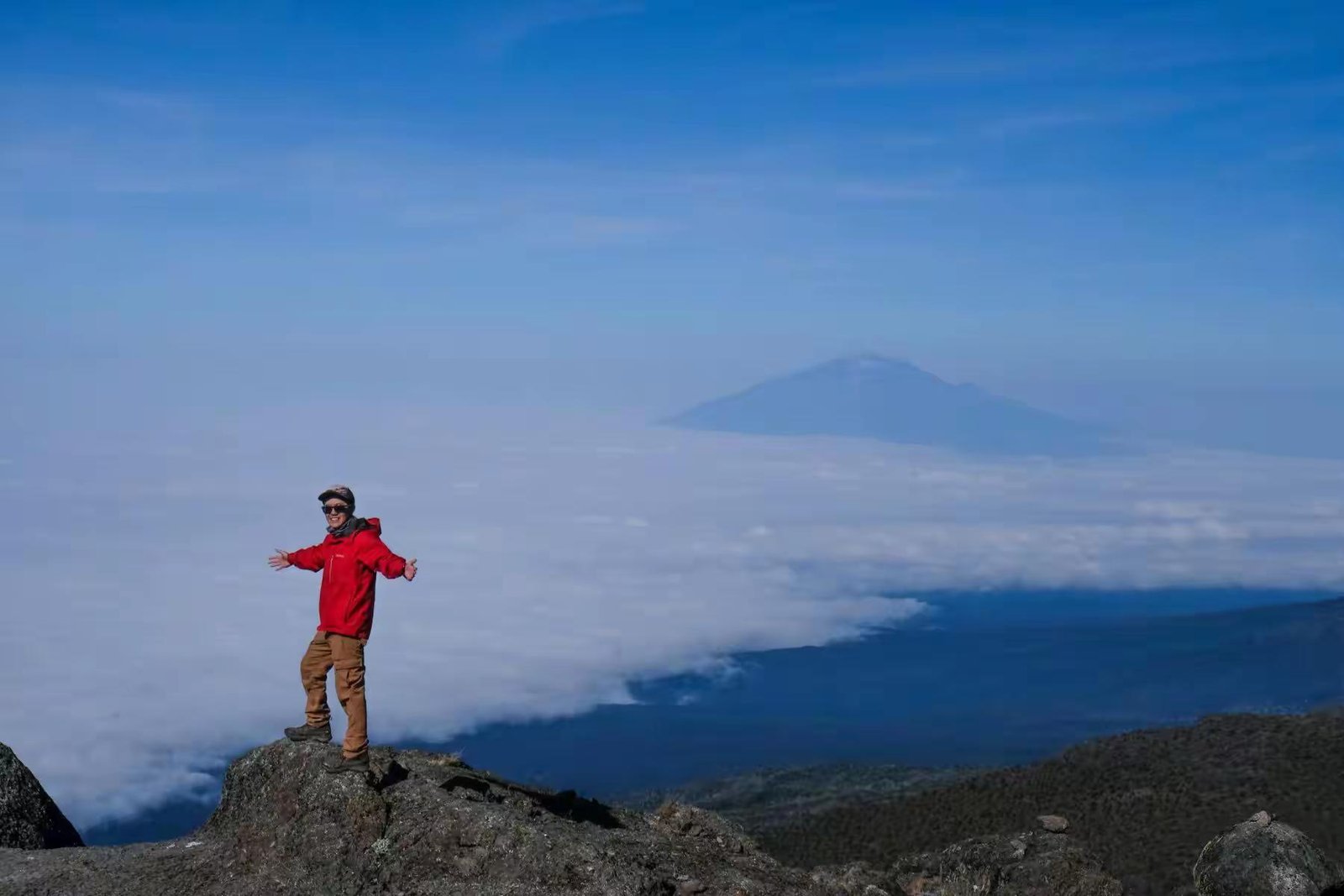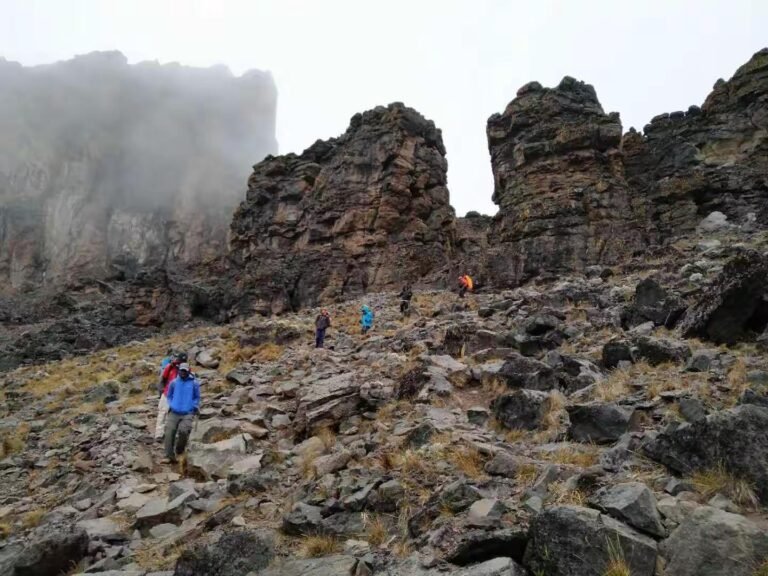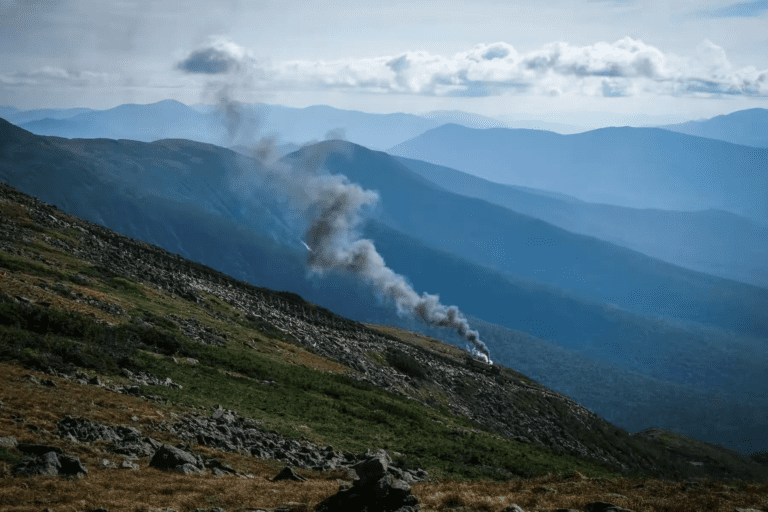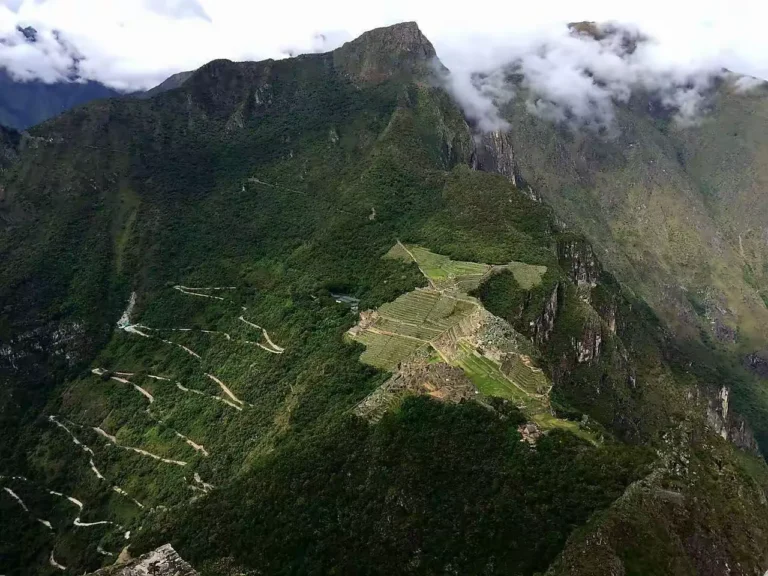Dates: September 28 – October 9, 2018
Route: Kilimanjaro Machame Route (6 days, 5 nights)
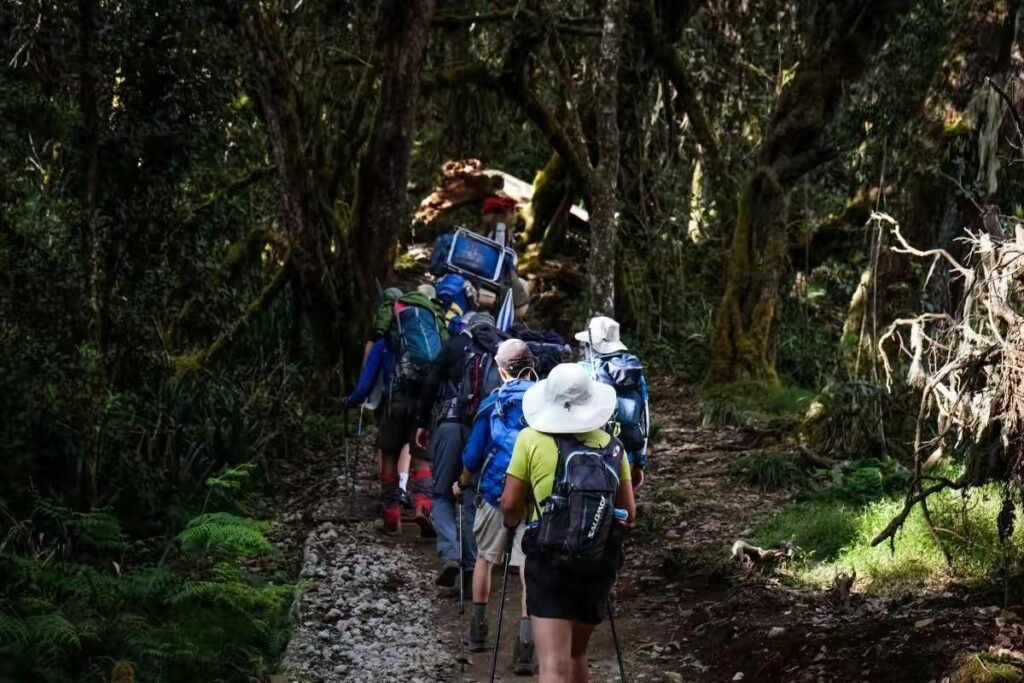
Day 0: Arrival & Preparation for Mount Kilimanjaro
We began our adventure with a flight from Toronto, transiting through Addis Ababa, and arriving at Kilimanjaro International Airport. From there, a pre-arranged transfer brought us to Moshi’s Keys Hotel. Trans-Kibo, a local trekking agency with over 20 years of experience, organized our climb of Mount Kilimanjaro.
Upon arrival, our guide Eden and his team conducted a thorough gear check. For the trek, each participant was provided with a duffel bag (limited to 15 kg) for the porters to carry, while we kept a daypack for essentials like water, snacks, and rain gear. Here is a detailed packing list.
Our chosen route – Kilimanjaro Machame Route is celebrated for its stunning scenery.
Day 1: Machame Gate to Machame Camp (11 km, 3020 m)
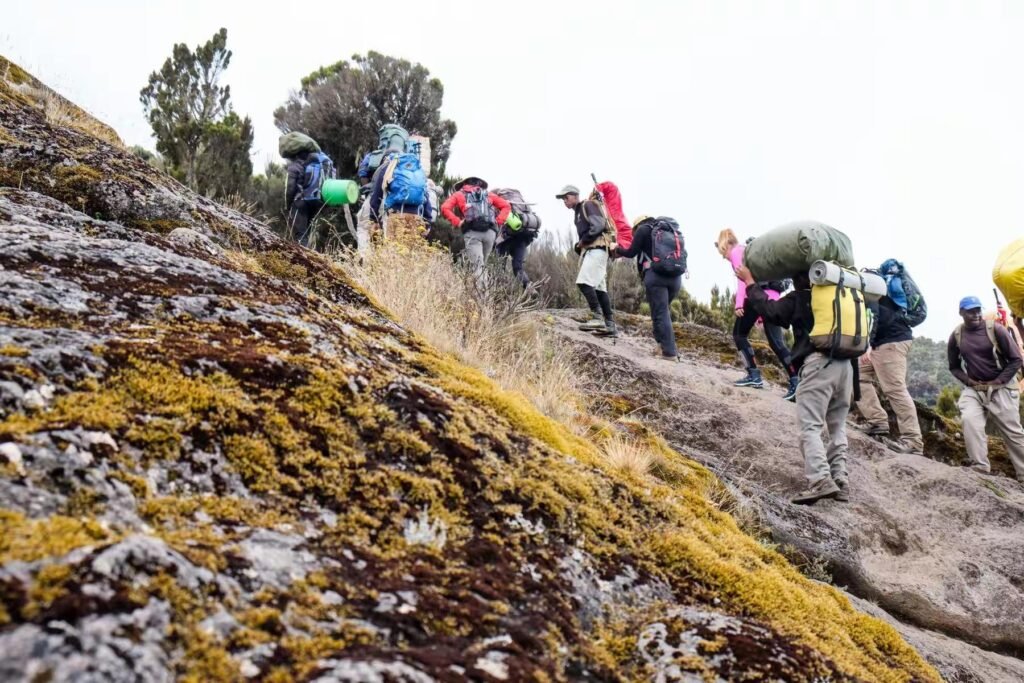

Kilimanjaro Machame Route officially began at the Machame Gate, where registration and porter load inspections took place. Each porter’s load was restricted to 20 kg, and our team of five hikers was supported by 18 porters, 3 guides, and a chef.
The trail led us through lush tropical rainforests, where we encountered monkeys and unique flora. Despite being a relatively easy day of hiking, we were reminded to go “pole pole” (slowly) to conserve energy and acclimatize. By late afternoon, we reached Machame Camp, where our tents were already set up, and we enjoyed popcorn during tea time before a hearty dinner.
Day 2: Machame Camp to Shira Camp (6 km, 3847 m)
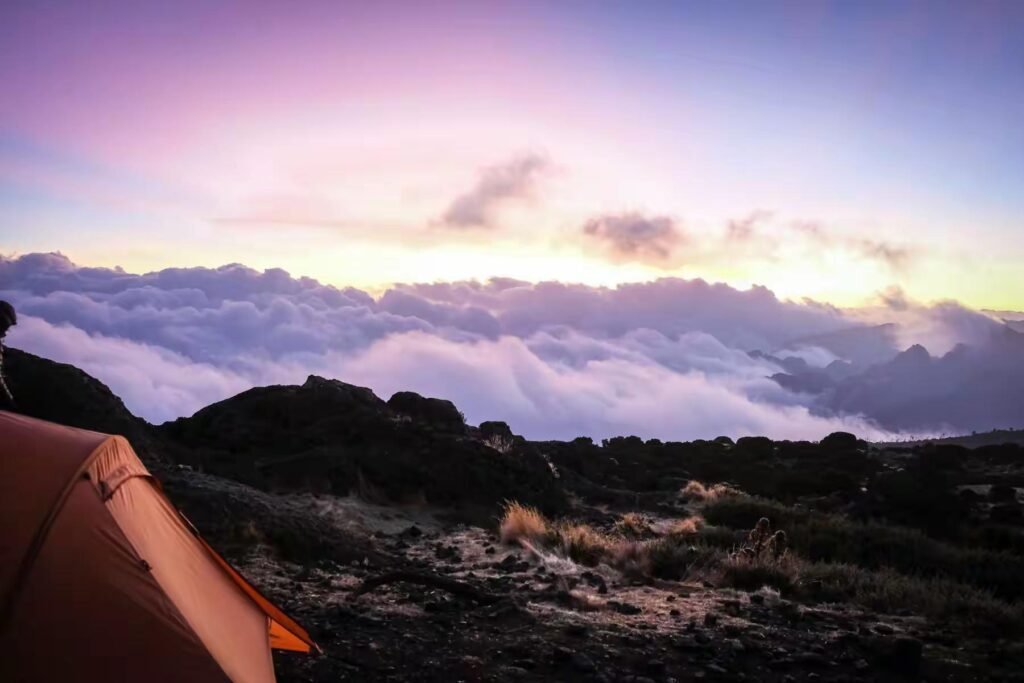
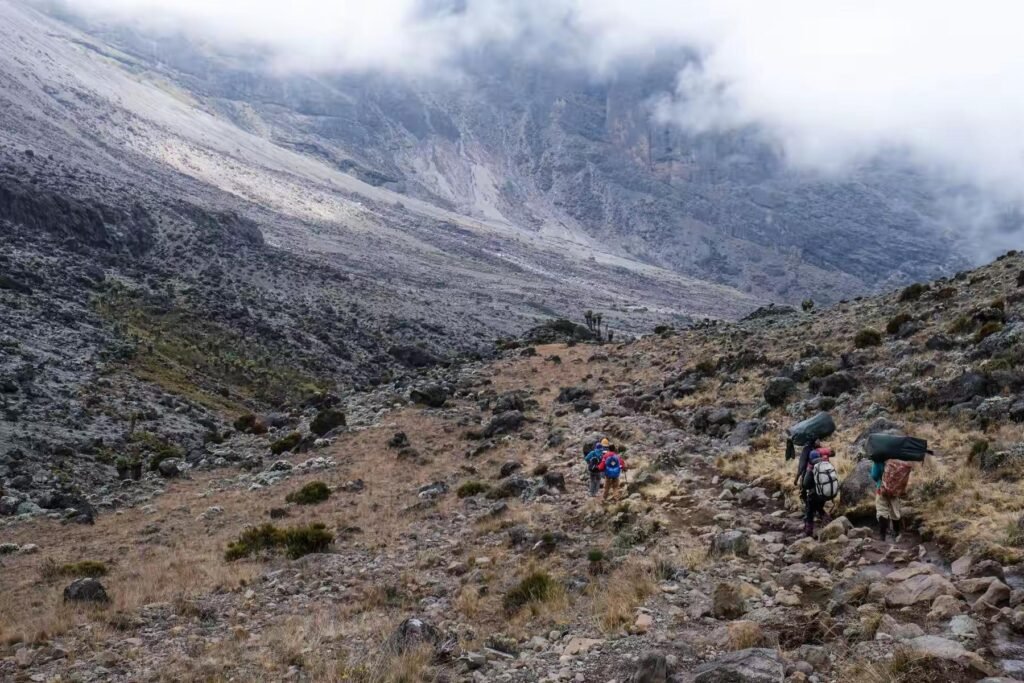
This day involved a steady uphill climb through moorlands. The vegetation became sparser, and the landscape transitioned to open vistas with occasional giant groundsels and lobelias. The trail offered breathtaking views of Mount Meru floating above the clouds.
Shira Camp, located on a windswept plateau, was one of the coldest campsites on our journey. After lunch, we explored the nearby Shira Cave, once a shelter for local villagers during times of conflict. The evening brought strong winds, making our warm sleeping bags all the more essential.
Day 3: Shira Camp to Baranco Camp via Lava Tower (11 km, 3984 m)
This acclimatization day took us to Lava Tower (4630 m) before descending to Baranco Camp. The climb to Lava Tower tested our endurance, but the effort was rewarded with stunning volcanic landscapes.
Descending to Baranco Camp, we passed the striking “Senecio trees,” unique to Kilimanjaro. Baranco Camp is famous for its proximity to the Baranco Wall, a steep rock face we would tackle the next morning. Despite the challenge ahead, the camp’s spectacular views made it a favorite among trekkers.



Day 4: Baranco Camp to Barafu Camp (11 km, 4681 m)
The day began with the exhilarating climb up the Baranco Wall. Though intimidating at first glance, the zigzagging trail and the guidance of our experienced team made the ascent manageable. A notable section, the “Kissing Rock,” required close contact with the wall, adding a touch of adventure.
After conquering the wall, we crossed the Karanga Valley, stopping at Karanga Camp for a hot meal. The final stretch to Barafu Camp, our base for the summit push, involved a challenging ascent through rocky terrain. By evening, we settled into camp, resting for the midnight climb to Uhuru Peak.
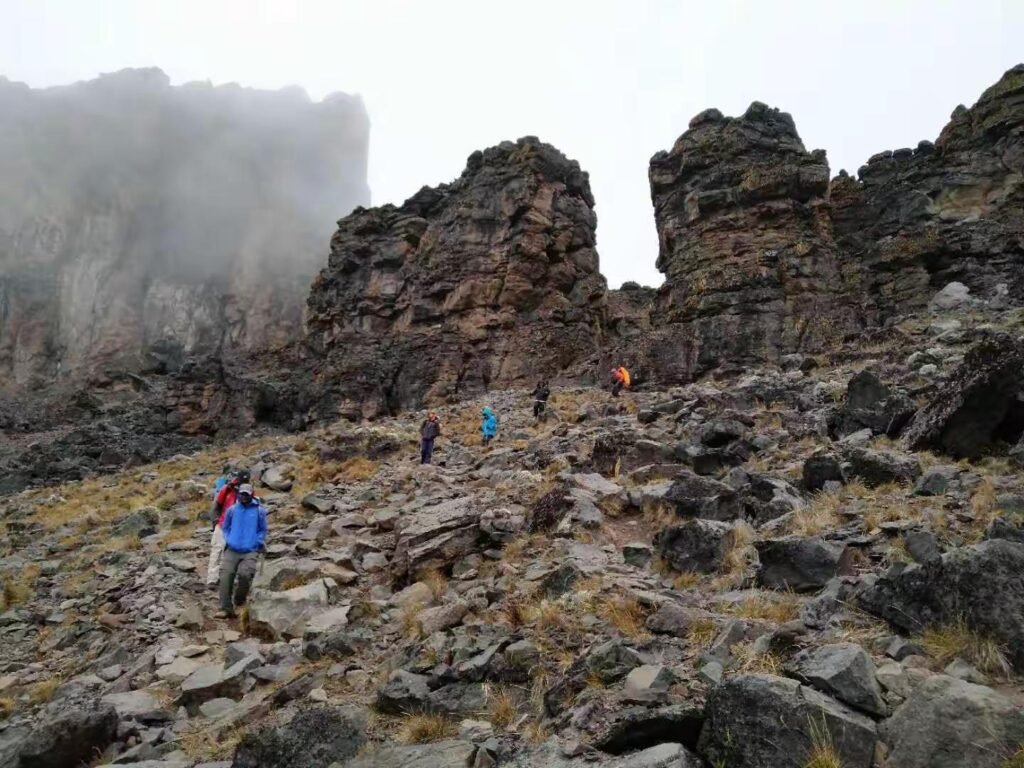

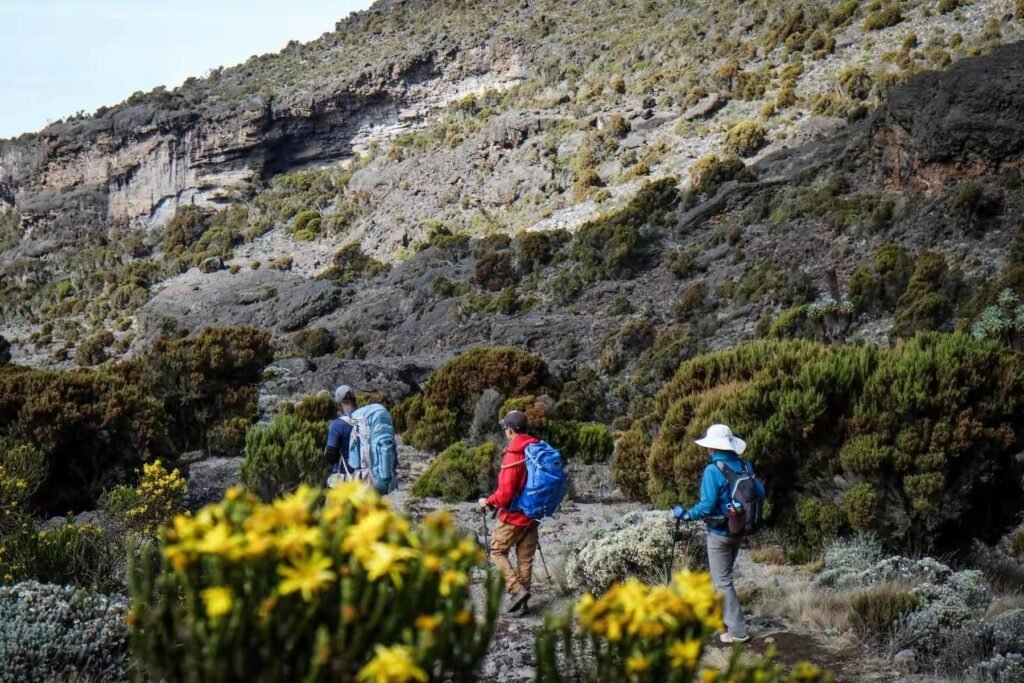

Summit Day: Barafu Camp to Uhuru Peak (5895 m) and Descent
Our summit attempt began at midnight under a crescent moon. The climb from Barafu Camp to Uhuru Peak took approximately six hours, with the final push requiring determination and perseverance. The sun rose as we neared Stella Point (5756 m), illuminating the glaciers and volcanic landscape.
Reaching Uhuru Peak—the highest point in Africa—was an emotional moment. The breathtaking views and the sense of accomplishment made the effort worthwhile. After a quick photo session, we began our descent.
The journey down was faster but equally demanding, with loose scree offering opportunities for “scree skiing.” By late afternoon, we reached Mweka Camp for a well-deserved rest.



Day 6: Mweka Camp to Mweka Gate (13.5 km)
The final descent of Kilimanjaro Machame Route through lush montane forests brought us back to the Mweka Gate, where we signed out and celebrated with our guides and porters. The team’s cheerful singing and dancing made for a memorable farewell.
Tips for Kilimanjaro Machame Route
Climbing Kilimanjaro is a transformative experience, blending physical challenge with stunning natural beauty. Here are some tips for future trekkers:
- Choose Your Route Wisely: Kilimanjaro Machame Route offers a balance of scenic views and acclimatization opportunities.
- Pack Smart: Layered clothing, quality rain gear, and a comfortable sleeping bag are essential.
- Hydrate and Acclimatize: Drink plenty of water and ascend slowly to minimize altitude sickness.
- Hire a Reputable Agency: Experienced guides and a supportive team make a significant difference.
Where to Stay Before or After Climbing Kilimanjaro
We booked our Kilimanjaro Machame Route treck with a local guide company, so most logistics were taken care of. However, if you’re arranging extra days before or after the trek, you’ll likely stay in either Moshi or Arusha.
- Find great places to stay in Moshi on Booking.com
- Or browse options in Arusha on Booking.com
Both cities offer good hotels, and your choice depends on your itinerary – Moshi is closer to the mountain, while Arusha is better for safari connections.
Support the blog → Click the orange icon bottom-right (“Buy Me a Coffee”).

